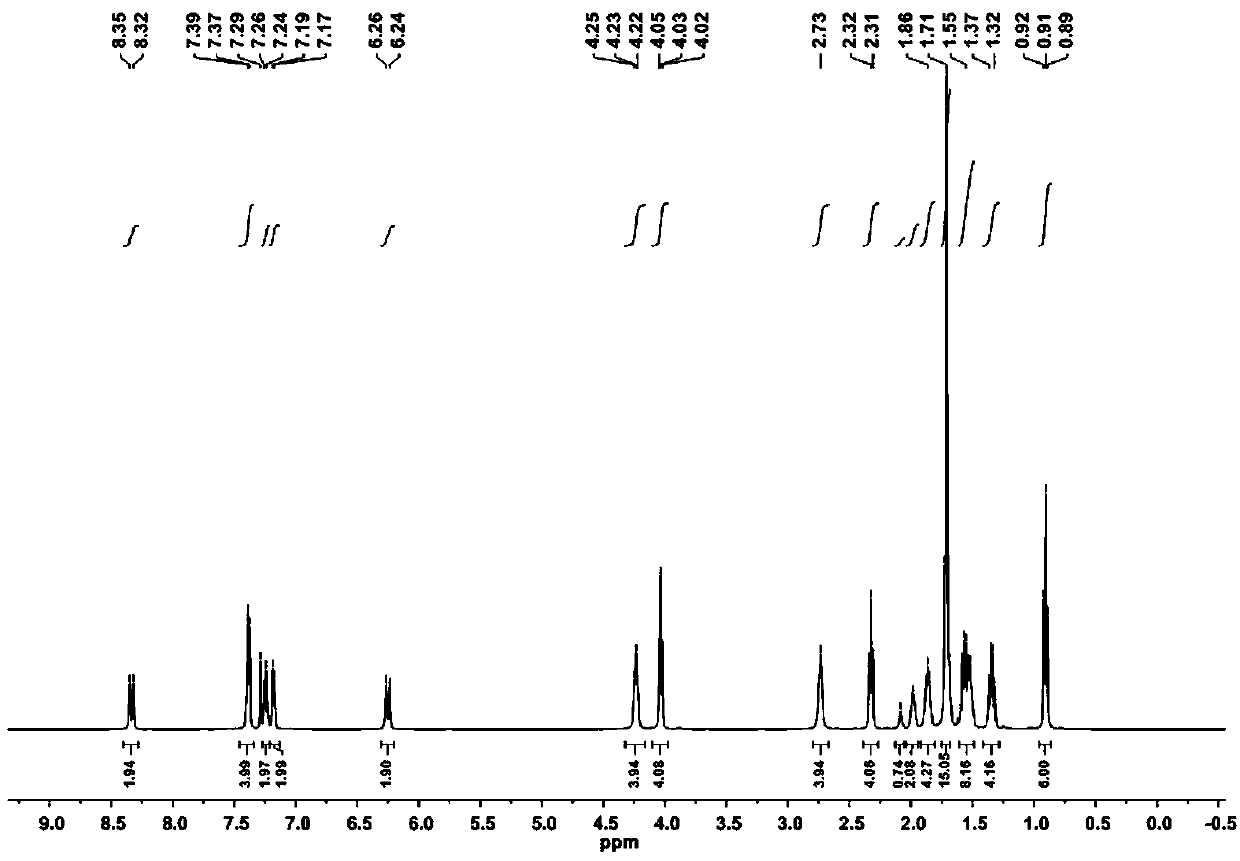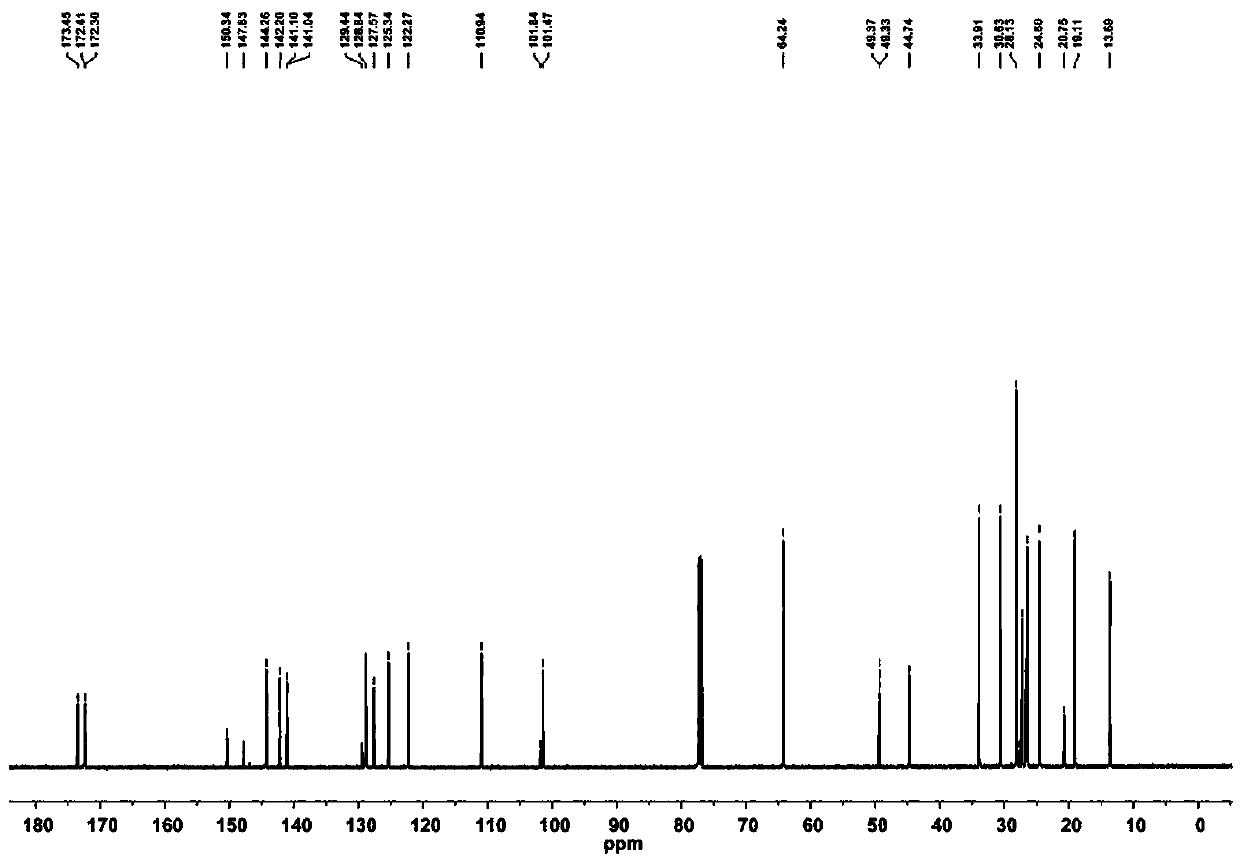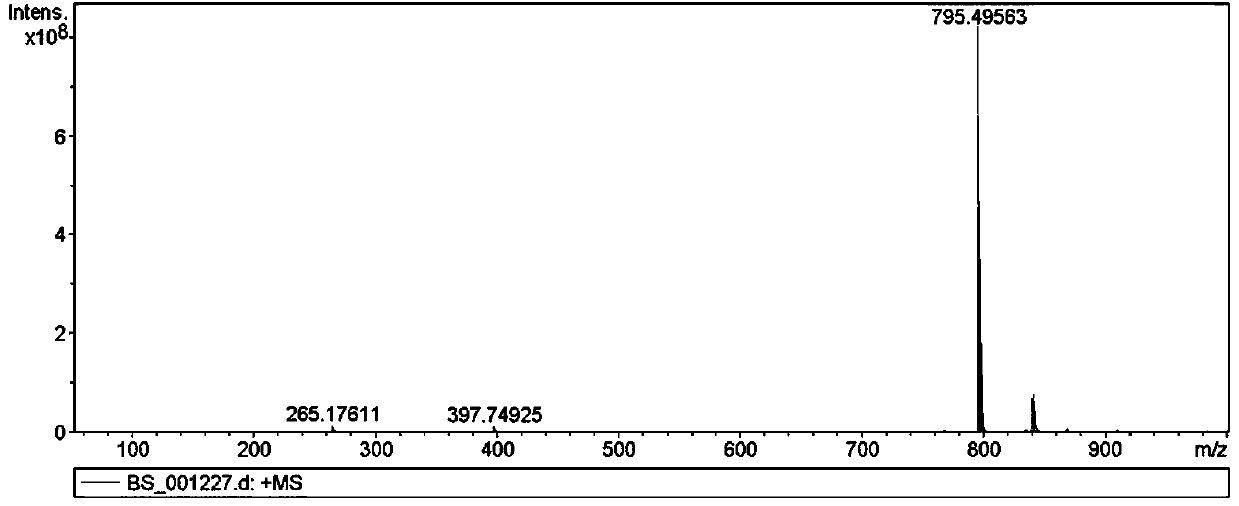Compound, preparation and application thereof in detecting divalent copper ions and pH of strong acid
A compound, ethylenediamine technology, applied in chemical instruments and methods, organic chemistry, measuring devices, etc.
- Summary
- Abstract
- Description
- Claims
- Application Information
AI Technical Summary
Problems solved by technology
Method used
Image
Examples
Embodiment 1
[0070] Example 1: Preparation of fluorescent sensor RCy7
[0071] Step 1: Synthesis of Compound IV
[0072]
[0073] Dissolve 10 g of 2,3,3-trimethyl-3H-indoline in acetonitrile, add 1.5 equivalents (moles) of 6-bromohexanoic acid dropwise at room temperature, reflux and stir for 20 hours under nitrogen protection, cool, and add diethyl ether Extract, evaporate the solvent, dissolve in a small amount of ethanol, add ether to precipitate, filter, and dry in vacuo. Compound IV (1-(5-carboxypentyl)-2,3,3-trimethyl-3H-indole) was obtained as a white solid.
[0074] Step 2: Synthesis of Compound III
[0075]
[0076] Take 1g of condensing agent 2-chloro-1-formyl-3-hydroxymethylcyclohexene, 2.5 equivalents (moles) of compound IV, 50mL of n-butanol, and 5mL of toluene into a flask equipped with a water separator. The mixture was stirred under reflux for 15 hours under the protection of nitrogen to obtain a dark green solution, and the solvent was evaporated by rotary evaporati...
Embodiment 2
[0091] Embodiment 2: The influence of the concentration of divalent copper ions on the ultraviolet-visible absorption spectrum of sensor RCy7 of the present invention
[0092] At a concentration of 10 μmol / Lol / L sensor RCy7 in acetonitrile / Tris-HCl (v / v, 1:1, pH=7.2) buffer solution, add 0,0.1,0.3,0.5,0.7,1,1.5,2.0, 3.0, 5.0, 5.0, 7.0, 10, 13, 15, 18, 20, 25, 30 times the equivalent concentration of divalent copper ion solution and measure the ultraviolet-visible absorption spectrum of the system, the results show that the maximum absorption value of the sensor RCy7 is at 633nm About, after adding divalent copper ions, the absorption at 633nm decreases significantly, and at the same time the absorption peak at 511nm continues to increase, but when the concentration of divalent copper ions is greater than 2 equivalents, the absorption peak at 511nm begins to decrease gradually . See attached Figure 7 .
Embodiment 3
[0093] Embodiment 3: The fluorescent sensor RCy7 of the present invention can be used to detect divalent copper ions, and the specific application method is as follows:
[0094] Determination of divalent copper ion content: First, mix acetonitrile and Tris-HCl (pH=7.2) buffer evenly according to the volume ratio of 1:1, then add the sensor RCy7 of the present invention to make the concentration 10 μmol / L to make a standard solvent, Then use the prepared standard solvent to prepare divalent copper ion concentrations of 0, 1, 3, 5, 7, 10, 12, 13, 14, 15, 20, 30, 35, 40, 45, 50, 70, 100, 130, 150, 180, 200, 250, 300 μmol The copper ion standard solution of / L adopts HITACHI F2500 fluorescence spectrophotometer, and at excitation wavelength is 550nm, the emission wavelength when measuring different copper ion concentrations respectively is fluorescence intensity when 577nm and 722nm, fluorescence intensity ratio (F 577 / F 722 ) and the concentration of copper ions to make a stand...
PUM
 Login to View More
Login to View More Abstract
Description
Claims
Application Information
 Login to View More
Login to View More - R&D
- Intellectual Property
- Life Sciences
- Materials
- Tech Scout
- Unparalleled Data Quality
- Higher Quality Content
- 60% Fewer Hallucinations
Browse by: Latest US Patents, China's latest patents, Technical Efficacy Thesaurus, Application Domain, Technology Topic, Popular Technical Reports.
© 2025 PatSnap. All rights reserved.Legal|Privacy policy|Modern Slavery Act Transparency Statement|Sitemap|About US| Contact US: help@patsnap.com



